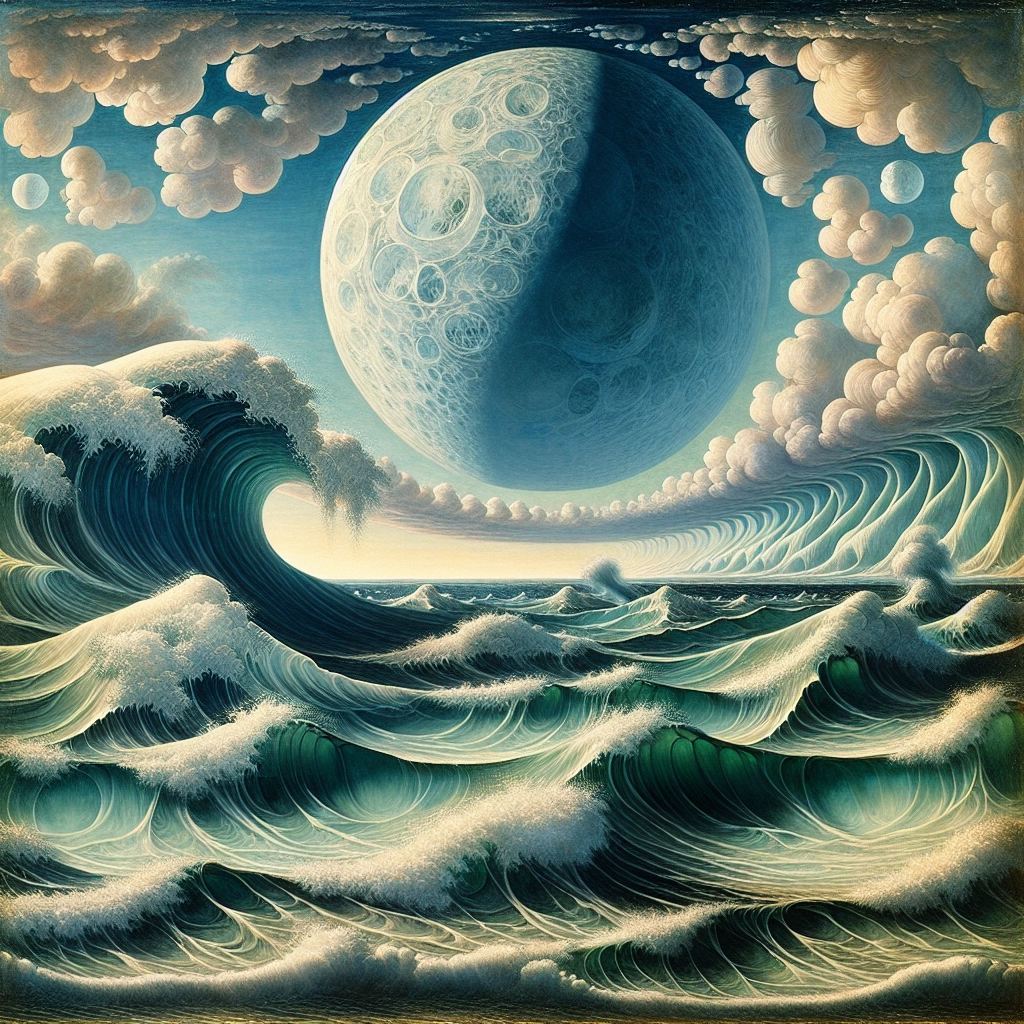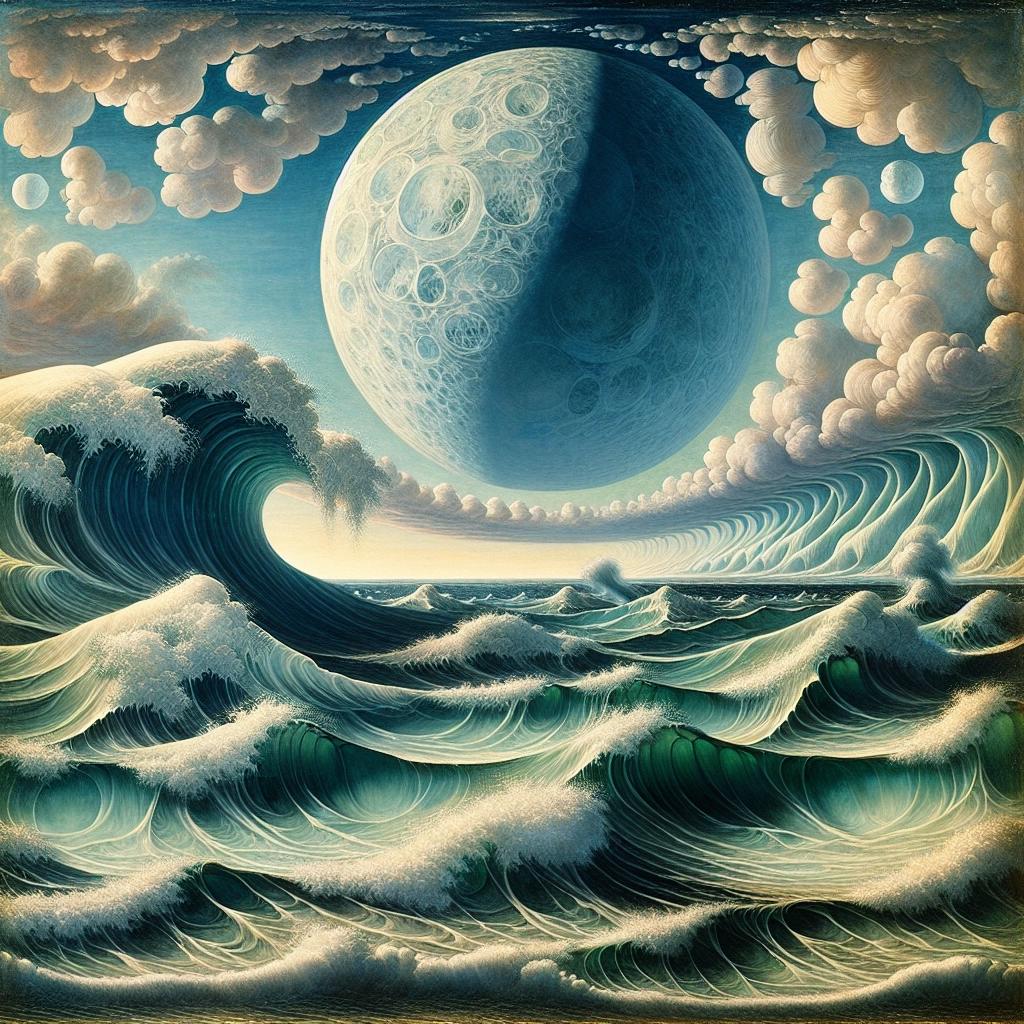The Rhythm of the Ocean: How Do Tides Work?
 Quantum Cyber Solutions
Quantum Cyber Solutions

Published on
Friday, May 29, 2020
The Rhythm of the Ocean: How Do Tides Work?
===============================================
Authors

Name
Eric deQuevedo 😄
Twitter
🌊 The Rhythm of the Ocean: How Do Tides Work? 🌊
Tides are a mesmerizing natural phenomenon that causes the regular rise and fall of sea levels along coastlines. But what drives this rhythmic movement of the ocean? Let's dive into the science behind tides, their causes, and the effects they have on our coastal environments.
🔬 The Science of Tides 🔬
Tides are primarily caused by the gravitational interactions between the Earth, the Moon, and the Sun. The gravitational pull of these celestial bodies generates tidal forces that result in the periodic rise and fall of sea levels.
🧠 How Tides Work 🧠
🌕 Gravitational Pull:
- Moon's Gravity: The Moon's gravitational pull is the strongest force affecting tides. As the Earth rotates, the Moon's gravity pulls on the water in the oceans, creating a bulge of water on the side of the Earth facing the Moon.
- Opposite Bulge: Simultaneously, another bulge forms on the opposite side of the Earth due to the centrifugal force created by the Earth-Moon system's rotation. This results in two high tides on opposite sides of the Earth.
☀️ Sun's Influence:
- Solar Gravity: The Sun also exerts a gravitational pull on the Earth's oceans. Although the Sun is much farther away than the Moon, its immense mass means it still has a significant effect on tides.
- Spring and Neap Tides: The Sun's gravitational influence varies depending on the alignment of the Earth, Moon, and Sun. When the Earth, Moon, and Sun are aligned (during full and new moons), the tidal forces combine to create higher high tides and lower low tides, known as spring tides. When the Sun and Moon are at right angles relative to the Earth (during the first and third quarters of the moon), the tidal forces partially cancel each other out, resulting in lower high tides and higher low tides, known as neap tides.
🌍 Earth's Rotation:
- Daily Cycle: As the Earth rotates on its axis, different areas of the planet experience high and low tides. Typically, coastal regions experience two high tides and two low tides each day, roughly 12 hours apart.
🌍 The Effects of Tides 🌍
Tides have significant impacts on coastal environments, marine life, and human activities.
📈 Coastal Environments:
- Intertidal Zones: The area between high and low tide marks, known as the intertidal zone, is a unique habitat that supports a diverse array of marine life adapted to changing conditions.
- Erosion and Deposition: Tidal movements contribute to coastal erosion and deposition, shaping shorelines and affecting sediment distribution.
🐠 Marine Life:
- Feeding and Breeding: Many marine species rely on tidal cycles for feeding and breeding. For example, some fish and invertebrates time their spawning activities to coincide with high tides.
- Migration: Tides influence the migration patterns of certain marine animals, such as crabs and shorebirds, which depend on the availability of tidal flats for foraging.
🚢 Human Activities:
- Navigation: Tides affect maritime navigation, with high tides providing deeper water for ships to enter and leave ports, and low tides revealing hazards like rocks and sandbars.
- Fishing and Aquaculture: Tidal cycles play a crucial role in traditional fishing practices and modern aquaculture, impacting the availability of resources and the management of coastal fisheries.
🌟 The Beauty of Tidal Movements 🌟
Tides are a testament to the intricate dance between celestial bodies and their influence on our planet. Understanding how tides work not only deepens our appreciation for the natural world but also highlights the interconnectedness of Earth, Moon, and Sun.
Next time you visit the coast, take a moment to observe the changing tides and reflect on the powerful forces at play. Let's celebrate the wonders of tidal movements and the vital role they play in shaping our coastal landscapes and supporting marine life.
Discuss on Twitter • View on GitHub
Tags
Tides
Ocean
Gravity
Moon
Earth
Questions
Previous Article
Navigating the Seas: How Do Sea Turtles Navigate Across the Ocean?
Next Article
The Amazing Regeneration of Starfish: How Do Starfish Regenerate Lost Limbs?
Subscribe to my newsletter
Read articles from Quantum Cyber Solutions directly inside your inbox. Subscribe to the newsletter, and don't miss out.
Written by
